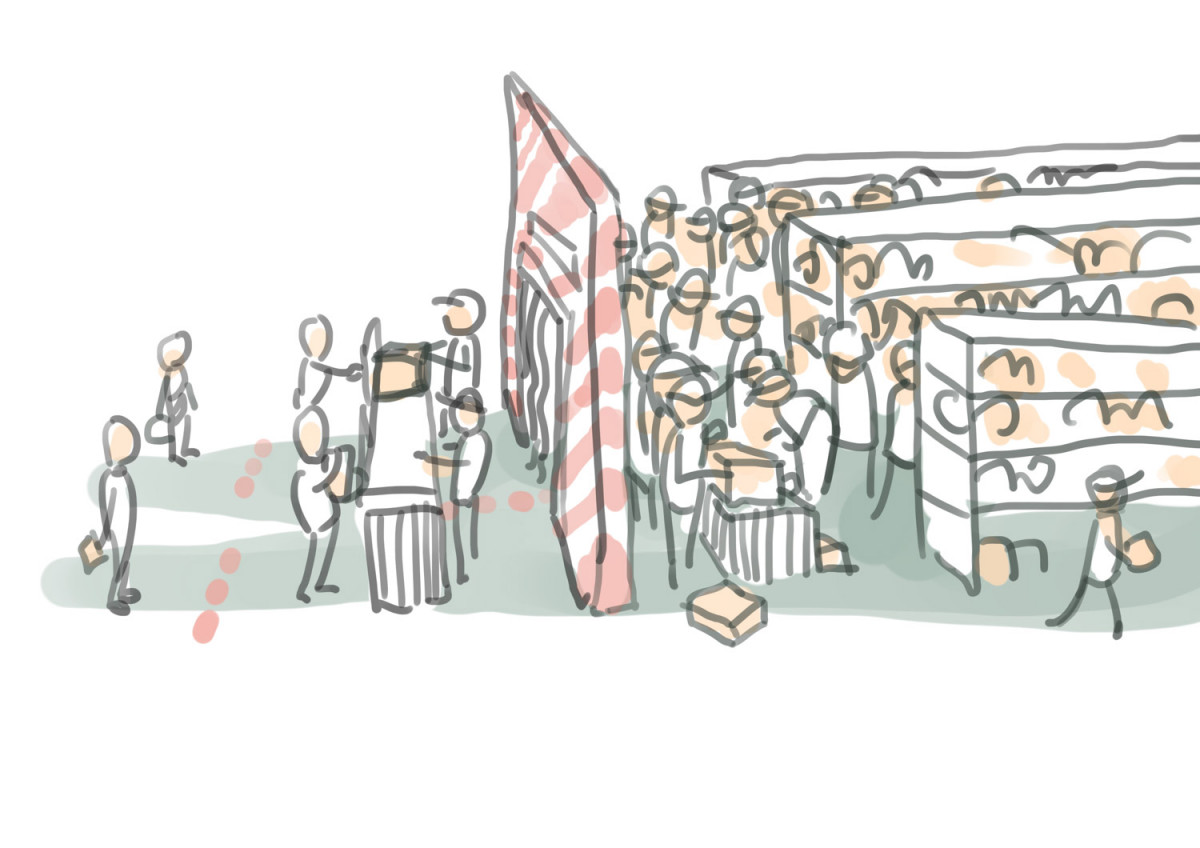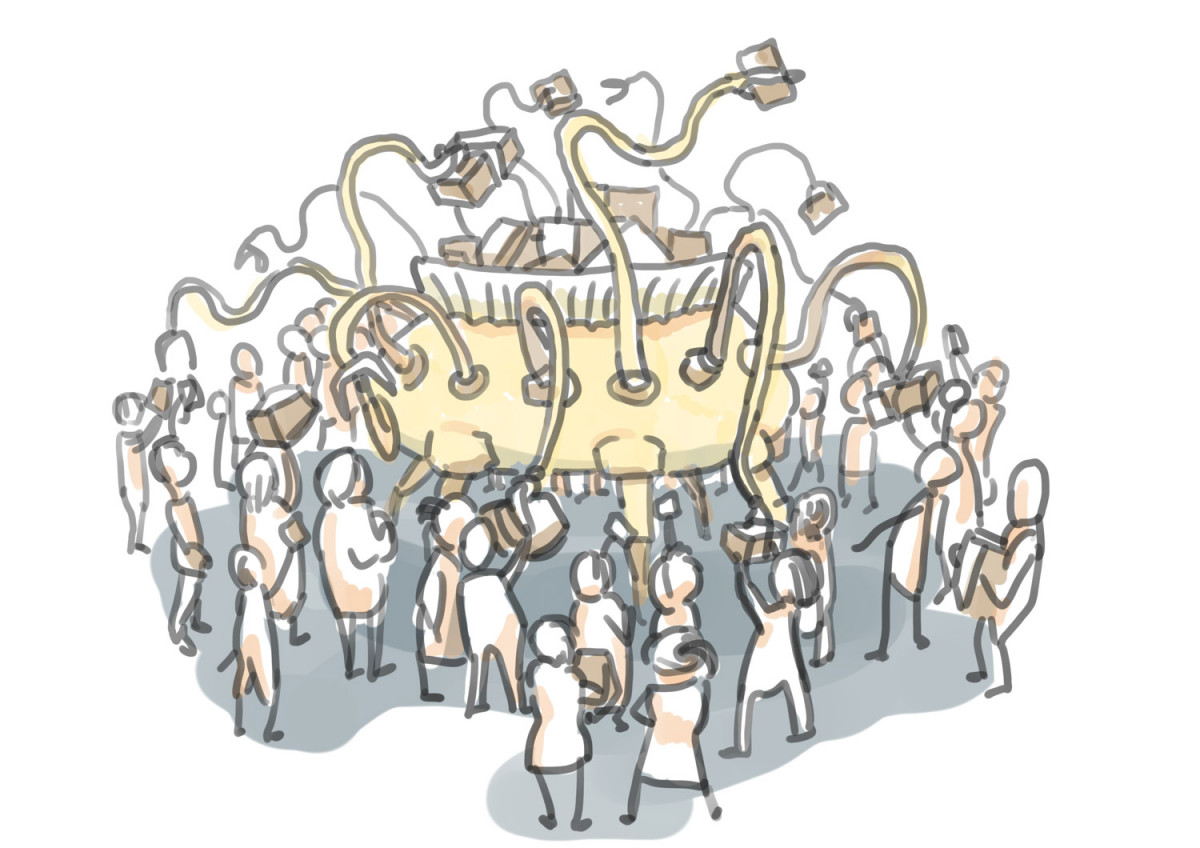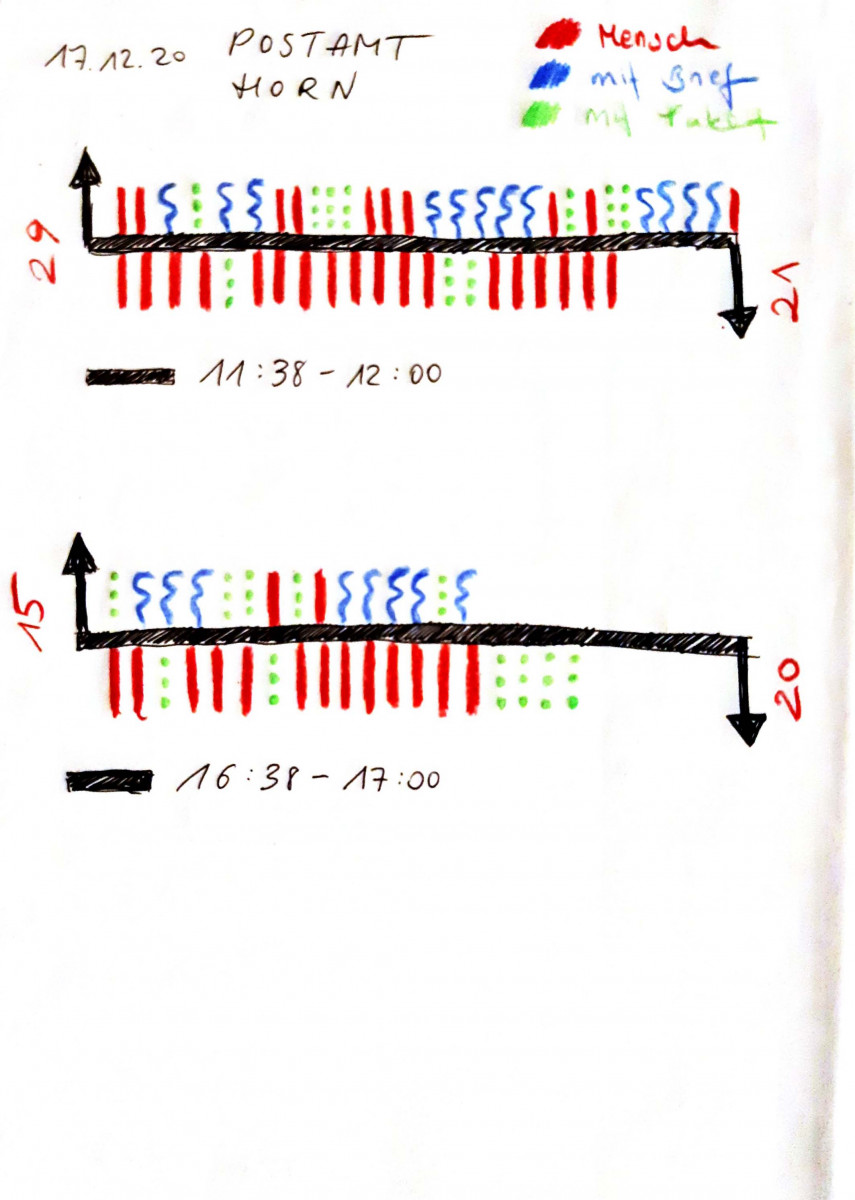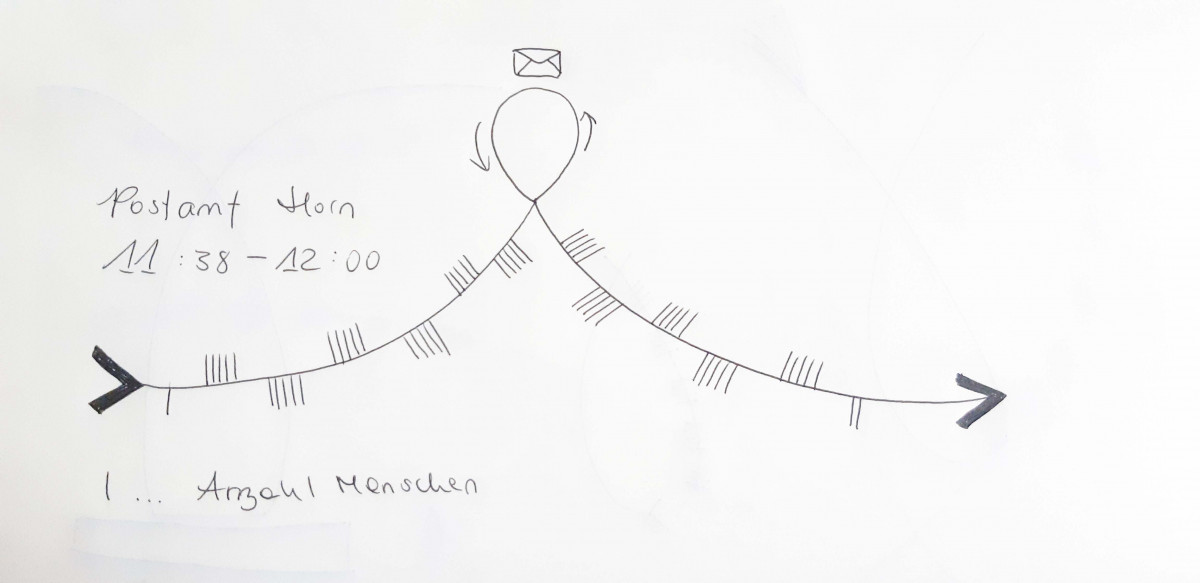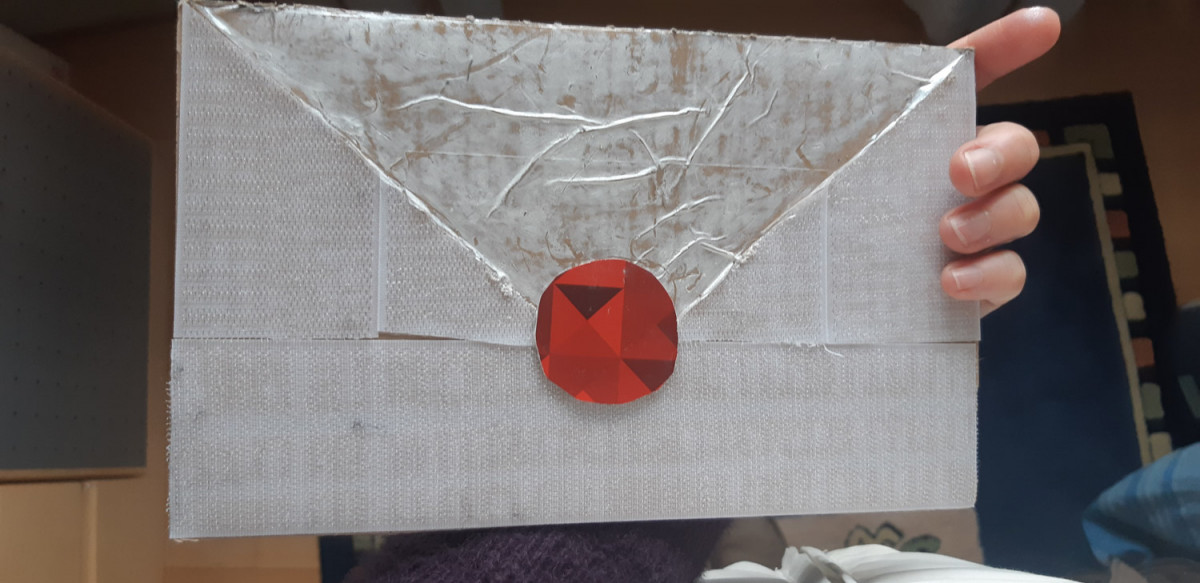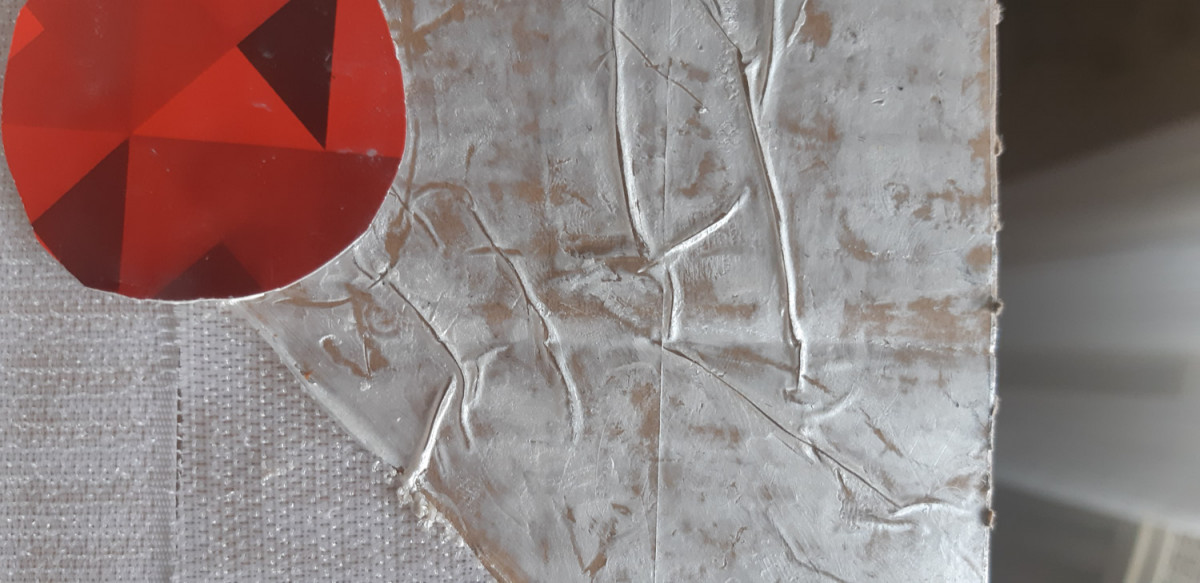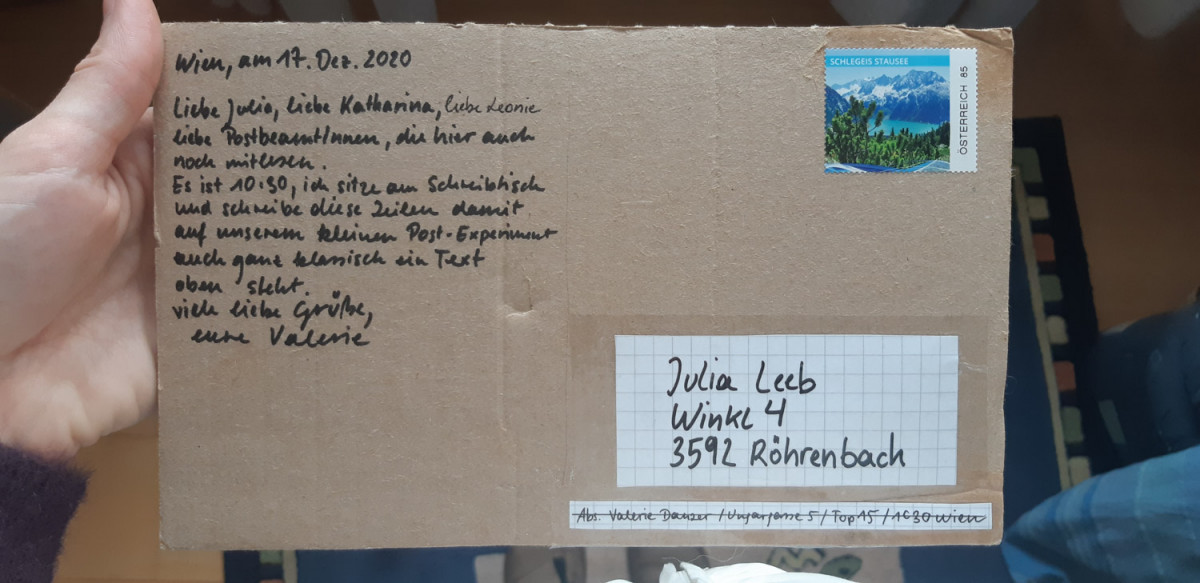Velcro Letter – Post Office
Velcro Letter – Post Office
A PROJECT BY Katharina Biser, Valerie Danzer, Leonie Kaltenegger & Julia Leeb
There is no question that a post office branch is a place that has its own logic: Fixed procedures and demarcated areas with various functions, such as parcel counter and sorting area, give the place called “post office” its structure. Even without the measures against the pandemic, there are uniform and strict rules in place, including the clear franking of a mailing, its drop off, acceptance, and forwarding. Only they allow the functions of the mail service and mailing routes to become obvious and possible. For our “Post Office” expedition, we visited various post office branches in Linz and Horn, always alone and at different times of the day. We wanted to investigate the procedures, the (in)accessible areas’ mechanisms, and the mailing routes. How do the routines change at different times of the day? In what way is a mail distribution center a place of “social contagion”? Where do the places inaccessible to visitors begin, and how are their threshold areas designated? What goes on in “invisible” places like sorting areas, containers, and conveyor belts? Are there possibilities to render these places and their dynamics visible?
PLACES OF TRANSITION – OBSERVATIONS
In order to investigate the procedures, we observed the visitors’ coming and going, counted persons with/without letters/parcels in the mornings and afternoons, and interviewed postal clerks. We established: The post office “only” serves as a place of transition. Neither humans nor objects stay in this space for long. Procedures seem linear-causal and circular, provided that the procedure keeps repeating: People drop off a letter at the mail counter, it is franked, addressed, handed over to the sorting area and sent off on the mailing route. We documented our observations in illustrated stories and sketches/statistics through which the human-object parallel that structures the room became particularly evident: Both wander into the room and out again, both are on a mailing route.We experienced all the post office branches as ambivalent places: On the one hand, they are open to the public, their structure seeming clearly comprehensible. At the same time, areas of the enigmatic and “mysterious” emerge, as letters and parcels –many of them personal objects –pass into inaccessible, anonymous places, such as containers and conveyor belts.
As regards these non-places, we had to discover that there are powerful demarcation mechanisms in effect. Sorting areas are isolated and inaccessible to the public. The threshold areas are defined by diverging patterns of behavior: the visitors’ quiet waiting and staying put as opposed to the constant running back and forth of the employees and the constantly moving conveyor belt in the sorting area. We visualized these operations in drawings, thus rendering visible the places inaccessible to us.
(VELCRO) CHAIN LETTER – INTERVENTION
For the task of rendering visible the non-places that characterize the mailing routes, we decided on the “letter” object. To us it seemed obvious: Mail actually welcomes and requires the planting of objects. In order to capture traces of the mailing route, its “rooms in between” inaccessible to us, we prepared our cardboard mailing with Velcro and a special color, the delicate surface of which renders visible pressure and bumps, and therefore also the routes of transport, as tearsand indentations. We sent this (Velcro) chain letter to each one of us: as a personal, wandering object of social contagion.


